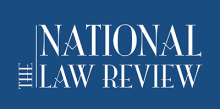A juicy, medium-rare piece of steak, egg salad, sautéed tomatoes—the makings of a scrumptious meal… and a potential lawsuit. Even your Sunday afternoon brunch cannot escape the omnipotence of the law, as demonstrated by authors James F. Neale and Angela Spivey’s Food Safety Law. The guidebook delves into the recent spate of litigation surrounding foodborne illnesses against the expansive, decentralized backdrop of the governing U.S. laws and administrative agencies.
While food safety may not be the first area of law that comes to mind when the “L” word is uttered, the guidebook persuades the reader of the full force of food safety litigation. Each year, over $1 trillion is spent on food by American consumers, seventy-six million people suffer from foodborne illnesses, the federal government spends approximately $1 trillion on food safety—indeed the guidebook justifies its existence with these statistics. The authors identify the culprit behind the rise in litigation as modernity as the advent of technology, mass production and the widespread distribution of food can give rise to contamination on a massive scale—leaving the field ripe for the picking for product liability lawsuits.
A significant portion of the guidebook focuses on the regulatory scheme behind food safety as the authors stress the bureaucratic and disjointed nature of the American food industry. The guidebook explores the fifteen federal governmental agencies and thirty-some statutes playing a role in the food scheme, dissecting the complexity of a system that assigns varying routines for different agencies. For example, a food producer may have to deal with one agency’s standard for food inspection for eggs and another agency’s standard for cheese, making for a piecemeal system not easily navigable for a layperson or an attorney. The authors manage to steer us through the regulatory labyrinth of American bureaucracy at its best, with extra attention placed on the reigning food agencies, the USDA and FDA. They conclude with a critique and proposals for reform for the administrative and regulatory framework of the industry.
Most notable is how the guidebook remains topical in its coverage, analyzing such contentious and newsworthy subjects as genetically modified foods and obesity. The emphasis remains on the litigation and regulatory angles as the authors distinguish lawsuits and the corresponding statutes. The science behind these areas is simplified by the authors as they describe such landmark cases as In re StarLink Corn Products Liability Litigation1 and Pelman v. McDonald’s Corp.2
A single volume edition with periodic supplements, the guidebook stands tall at 450 pages, sixteen chapters further divided into subchapters, an index and footnotes. The authors’ expertise from their Food and Beverage Industry Group at McGuireWoods LLP sets the tone as they address attorneys across the spectrum whose practice concerns the food industry. This includes attorneys representing members of the food production industry and plaintiffs in foodborne illness suits in contract and torts cases. The authors even go as far as describing the different causes of actions specific to food safety law, defenses and indemnification, all helpful to the practitioner.
The guidebook ties together all the loose and ever-developing ends of food safety litigation and the twists and turns of the applicable laws. Its addition to the food safety legal industry is certainly applicable and its breadth on foodborne illnesses remains sufficiently in-depth to ruin your appetite.
Review Authored by S. Merchant
[1] 212 F. Supp.2d 828 (N.D. Ill. 2002).
[1]237 F. Supp.2d 512 (S.D.N.Y. 2003).



 />i
/>i

